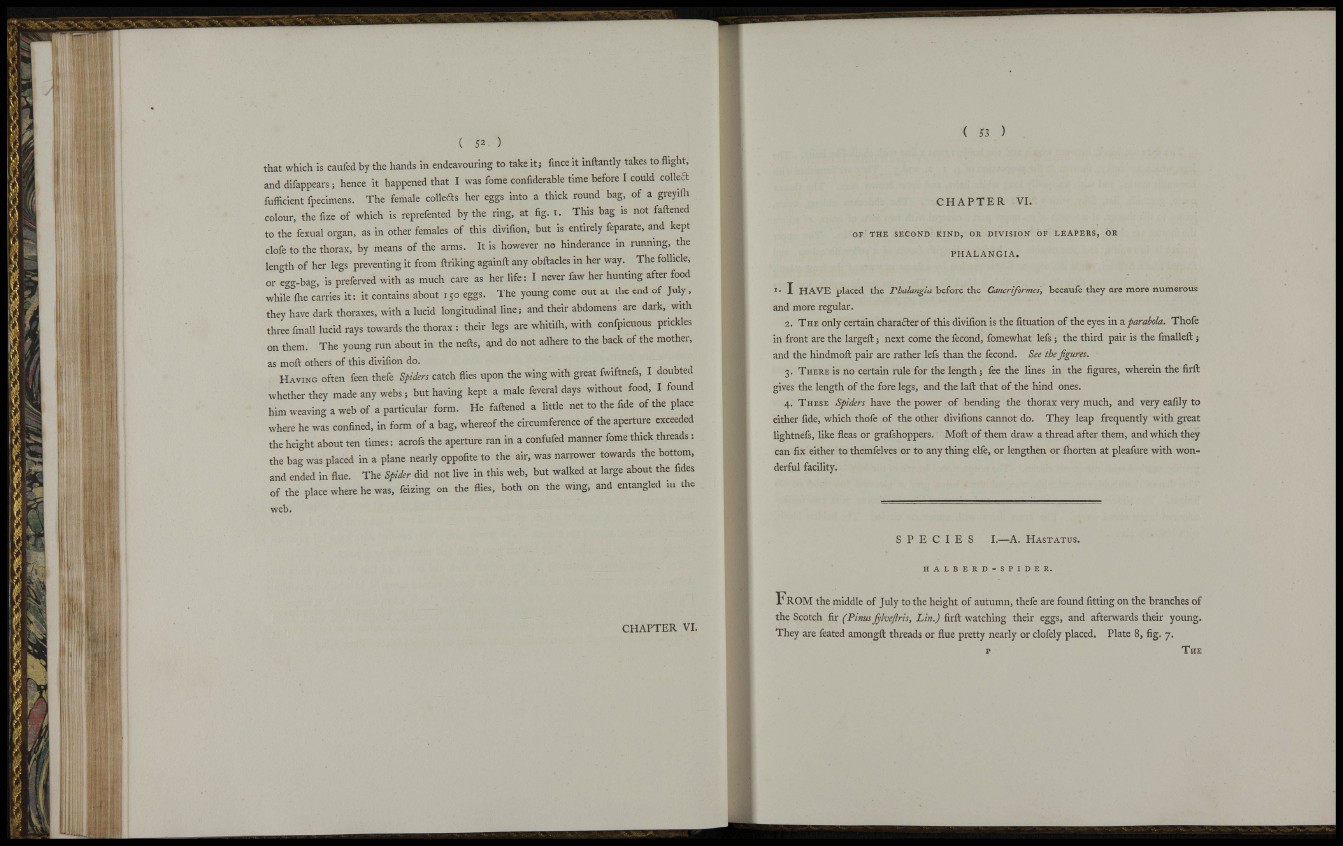
( 52 )
that which is caufed by the hands in endeavouring to take it; fmce it inftantly takes to flight,
anddifappears; hence it happened that I was fome confiderable time before I could colled
Efficient fpecimens. The female collects her eggs into a thick round bag, of a greyiOi
colour, the fize of which is reprefented by the ring, at fig. i. This bag is not faftened
to the fexual organ, as in other females of this divifion, but is entirely feparate, and kept
clofe to the thorax, by means of the arms. It is however no hinderance in running, the
length of her legs preventing it from ftriking againft any obftacles in her way. The follicle,
or egg-bag, is preferved with as much care as her life: I never faw her hunting after food
whiltme carries it: it contains about 150 eggs. The young come out at the end of July ;
t h e y have dark thoraxes, with a lucid longitudinal line ; and their abdomens are dark, with
t h r e e fmall lucid rays towards the thorax: their legs are whitifli, with confpicuous prickles
on them. The young run about in the nefts, and do not adhere to the back of the mother.
as moft others of this divifion do.
H A V I N G often feen thefe Spiders catch flies upon the wing with great fwiftnefs, I doubted
whether they made any webs ; but having kept a male feveral days without food, I found
him weaving a web of a particular form. He faftened a little net to the fide of the place
where he was confined, in form of a bag, whereof the circumference of the aperture exceeded
the height about ten times: acrofs the aperture ran in a confufed manner fome thick threads :
the bag was placed in a plane nearly oppofite to the air, was narrower towards the bottom.
and ended in flue. The Spider did not live in this web. but walked at large about the fides
of the place where he was. feizing on the flies, both on the wing, and entangled m the
web.
CHAPTER VI.
Si'--'
Ï; .!
( S3 )
C H A P T E R VI.
OF THE SECOND KIND, OR DIVISION OF LEAPERS, OR
PHALANGIA.
I- I HAVE placed the Phalangia hdore the Cancriformes, becaufe they are more numerous
and more regular.
2. THE only certain charafter of this divifion is the fituation of the eyes in a parabola. Thofe
in front are the largeft; next come the fecond, fomewhat lefs ; the third pair is the fmalleft j
and the hindmoft pair are rather lefs than the fecond. See the figures.
3 . THERE is no certain rule for the length; fee the lines in the figures, wherein the firft
gives the length of the fore legs, and the lafl: that of the hind ones.
4 . THESE Spiders have the power of bending the thorax very much, and very eafily to
either fide, which thofe of the other divifions cannot do. They leap frequently with great
lightnefs, like fleas or grafshoppers. Mofl: of them draw a thread after them, and which they
can fix either to themfelves or to any thing elfe, or lengthen or fliorten at pleafure with wonderful
facility.
S P E C I E S I.—A. HASTATUS.
H A L B E R D - S P I D E R .
F R O M the middle of July to the height of autumn, thefe are found fitting on the branches of
the Scotch fir (Pinusfylveflris, Lin.) firft watching their eggs, and afterwards their young.
They are feated amongft threads or flue pretty nearly or clofely placed. Plate 8. fig. 7.
p TH E